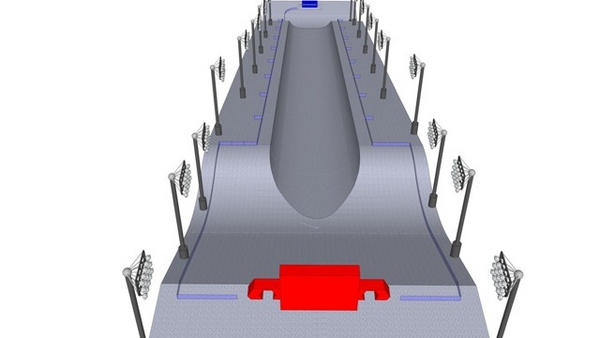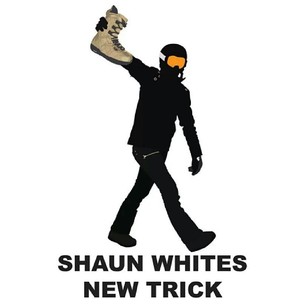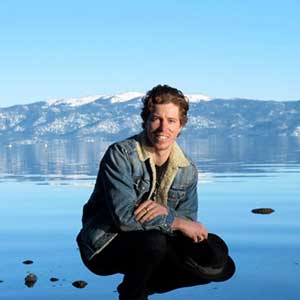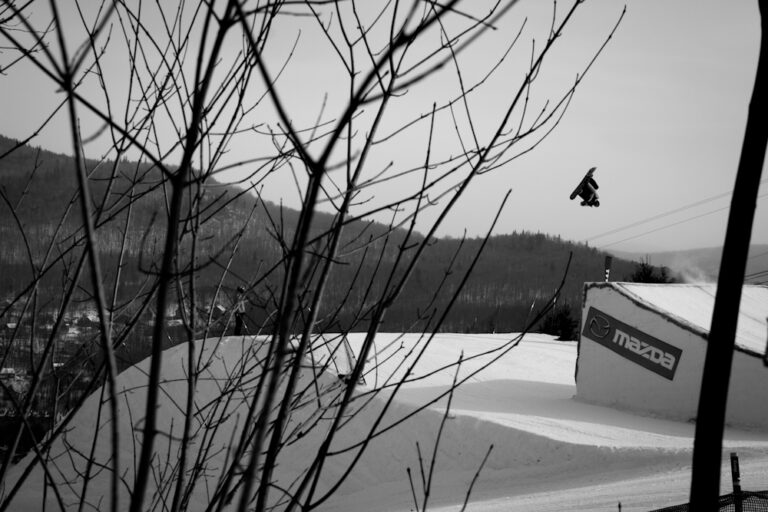As opposed to slopestyle, snowboard halfpipe is already an established Olympic event dating back to the 1998 Nagano games, where the pipe was slushy, helmets weren’t compulsory and double corks hadn’t even been dreamed of yet. But for those of you just coming to snowboarding via the current Olympic frenzy, you might be asking, ‘what’s a double cork?’, ‘what exactly is a halfpipe?’ or even, ‘what is this snowboarding and why haven’t I tried it yet?’
Well don’t fear, just for you, we’ve compiled a complete guide to all the basics of halfpipe snowboarding, specific to the Olympics. You can thank us later.
What is halfpipe?
Well, the easiest way to answer that question is to show you:

To put it bluntly, a halfpipe is essentially, well, half a pipe. The basic idea is that a snowboarder rides down the slope and criss-crosses between the two walls, using their momentum to fly into the air before landing back on the same wall and starting the exercise again. A modern halfpipe run include 5-7 different ‘hits’ in a run; Danny Davis demonstrates a fine example below:
Its a lot harder than it sounds, not that it comes across as particularly easy. Its a discipline that relies heavily on technique and speed, two things that are hard to combine, especially as the pipe itself its composed of compacted snow that freezes to form rock hard ice.
The pipe in Sochi will be an absolute beast; 180m long, 20m wide wall-to-wall and a monster 7m (that’s 23 feet!) high from the flat-bottom to the top. Scary stuff.
Scoring
Although there are multiple scoring systems used by each of snowboarding’s governing bodies, FIS (the body responsible for snowboarding in the Olympics) uses an ‘overall impression’ scoring system. Each run is given a points score out of a maximum of 100 based on different considerations, chiefly:
Amplitude – Height above the pipe each rider gains. Bigger is better.
Difficulty – Different tricks are harder than others, increasing points. Grabbing your board is standard and maximises your score.
Execution – Control and style, riders aim to keep their runs as tidy and slick as possible. Things that bring this score down include flapping your hands, grabbing your boots rather than your board or landing to flat in the bottom of the pipe. Or falling over, don’t do that.

Variety – In essence, do a different trick on every hit. Simple really.
Progression – New tricks or unusual versions of existing tricks (different grabs, tweaks etc.) should be rewarded with points, and points mean prizes!
Combinations – Doing difficult tricks back-to-back.
New for this year is FIS’s removal of their old rule that each run must include a ‘straight air,’ where the rider gains as much height as possible without spinning; expect literal wall-to-wall action as that now means every hit could potentially be a big trick. Also, riders will now keep the same running order from the first to the second run, eliminating the chance of someone winning in the first round and taking a ‘victory lap.’
Riders to watch
Shaun White is the king of snowboarding in the Olympics; with gold medals from both the 2006 and 2010 he’s definitely looking to complete his trophy cabinet with a third. He’s also riding in the slopestyle event, but having focused his career on the Olympics for so long he may be out of practice as this will be the younger event’s debut.
His main competition will come from Iouri Podladchikov, or I-Pod for short, a Russian rider who will be flying the Swiss flag in Sochi. Despite heated competition, he and White are apparently good friends, respecting each other’s appetite for competition. His biggest claim to date is inventing the ‘YOLO flip’ (a cab double frontside 1440, or in simpler terms a backwards facing double flip with four complete spins, phew!).
They will both be trying to out gun 15 year-old Ayumu Hirano, prodigy of Japan. At such a tender age he’s already topping podiums in world class events, throwing huge double-cork variations and has a gigantic backside air to boot.
Danny Davis will be one to spot as well, while he may not have the killer moves to take on the above he compensates by having arguably the most style out of the lot, making him a ‘true snowboarder’s’ firm favourite.
Don’t forget to watch out for the UK’s very own Ben Kilner and Dom Harington! Ben already has an 18th place from Vancouver 2010 which he will be looking to best, and whilst neither rider is likely to break the medals its amazing to see British talent at such a world class level.
Tricks to Look Out for
Just like in slopestyle, double corks are the name of the game. Essentially any trick where the rider goes upside down twice in the same hit; everyone qualifying for the finals probably has at least one variation under their belt.
Shaun White grabbed headlines last time round by unveiling his ‘Tomahawk’ for the first time, a backside 1260 double cork. However, these days Tomahawks are old hat; the trick in the spotlight this year will probably be the ‘YOLO flip,’ described above and shown from a first-person perspective below:
Enough to make your head hurt isn’t it? I-Pod’s original version was performed switch, i.e. travelling backwards, but Mr White has recently laid down both varieties in competition. Maybe he’ll do them both back to back, as is often the case with new tricks in halfpipe, but he’s also hinted at the possibility of a triple-cork for the Olympics, something that has never even been considered as possible up until now.
Whatever gets put down at the Olympics this year you can be sure it’ll be a show to watch, so make sure you tune in on time using our scheduling guide, found here.








